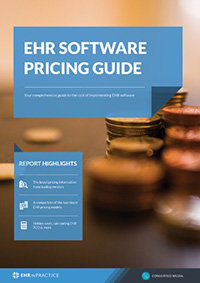The most important EHR features for practice management
Practice management software offers a variety of features designed for hospitals or healthcare systems. Vendors also offer practice management software tailored to smaller organizations. The products offer a wealth of features that can provide a great gain in efficiency for many organizations.
For example, practice management software offers providers the ability to monitor disparate operations and sources of data across their organization. Practice management software can also offer benefits in the area of patient engagement by allowing the patient the ability to access their records and manage their care through the ability to communicate with providers and schedule appointments. The following represents the essential EHR features for practice management.
Integration of practice management into the existing EHR and RCM
According to Black Book's practice management satisfaction survey, a practice management system that can be integrated into an EHR or revenue cycle management system is overwhelmingly viewed as an essential practice management feature.
In the survey conducted on hospital executive respondents, eighty-nine percent of respondents stated that non-integrated EHR and current practice management systems do not allow leaders to strategically design alternative reimbursement and payment methodologies that will improve physician engagement and advance patient care.
Larger practices with more complex operations will benefit from consolidating disparate systems. For example, recent EHR selection data indicate that the third most cited reason for upgrading or implementing healthcare technology such as a practice management system involved consolidating the functionality of disparate systems.
For example, billing data, administrative data, financial data, and clinical data can all be coordinated with an integrated practice management system. With better coordination, an organization can make gains in efficiency and quality of care. The specific benefits that can flow from an integrated practice management system are well documented.
According to the Black Book survey referenced previously, hospital-owned and employed physician practices with an integrated practice management system collect, on average, twenty-nine percent more on billed charges as compared to peers with non-integrated practice management platforms.
Further survey results show that Ninety percent of hospital networks achieved greater scheduling satisfaction within two months of implementing the capabilities of integrated an integrated practice management system.
Patient portals
From a quality of care perspective and a practice management standpoint, patient portals provide an effective method of allowing patients to take an active role in their care by allowing the patient to make and reschedule appointments, review their records, pay bills, contact message clinicians and administrative staff.
Effectively a patient portal not only increases patient engagement but can reduce the workload on staff who may be required to handle patient inquiries over the phone. In addition to reducing staff workload, a patient portal also provides a way to mitigate problems related to missed appointments and bill collection since patients can manage their accounts from home through the patient portal.
An integrated practice management system and patient portal allow for administrators and clinical team leaders to coordinate their operations. Further, it allows organizations with complex organizational structures to have seamless coordination between departments and locations in areas such as staffing, scheduling, billing, claims processing, patient engagement, and inventory management all maximizing the potential return on investment.
Free white paper

50 features to look for in your next EHR
A comprehensive guide to EHR features and how they can benefit your practice

Featured white papers
-

50 features to look for in your next EHR
A comprehensive guide to EHR features and how they can benefit your practice
Download -

EHR Vendor Directory
Get the most up-to-date directory of EHR software vendors. Find the best software for your practice.
Download -

EHR Pricing Guide
Get your complete guide to EHR software pricing and project costs. Your headstart on EHR pricing research
Download
Related articles
-

EHR requirements and key features: your complete guide
Our extended guide to EHR requirements - everything you need to know and more on the subject
-

What are the core functions of EHR
The basic functionality that your EHR should include
-

Cloud EHR: a complete buyers' guide
Thinking about a cloud EHR for your practice? Read our comprehensive guide first.

